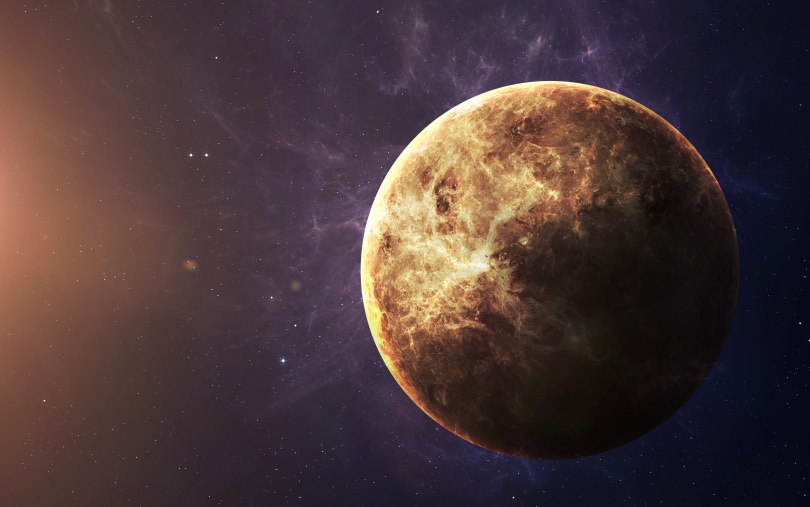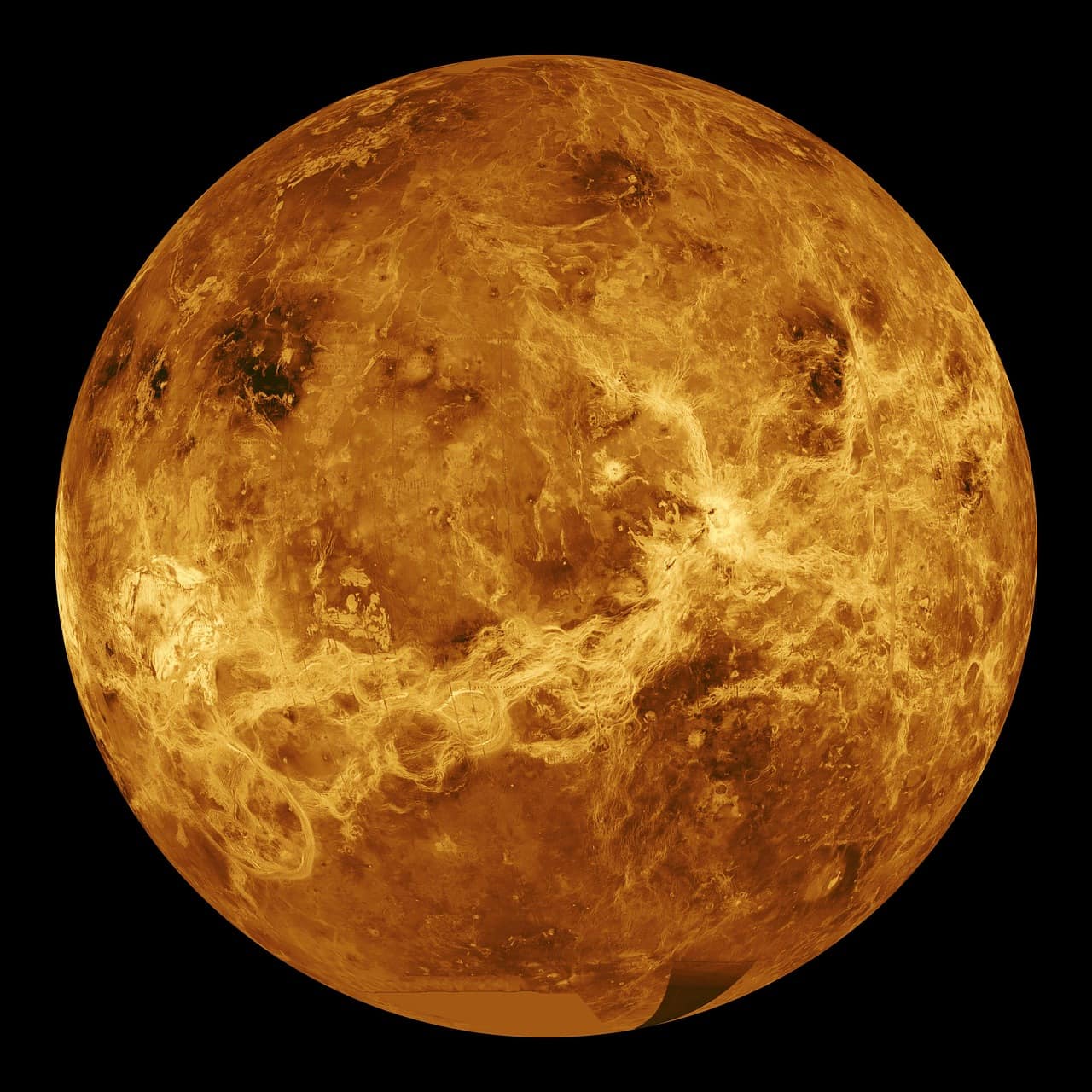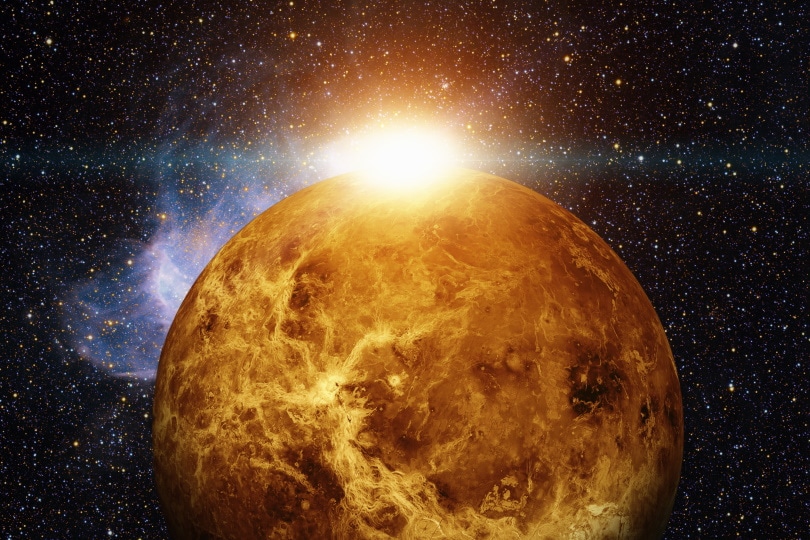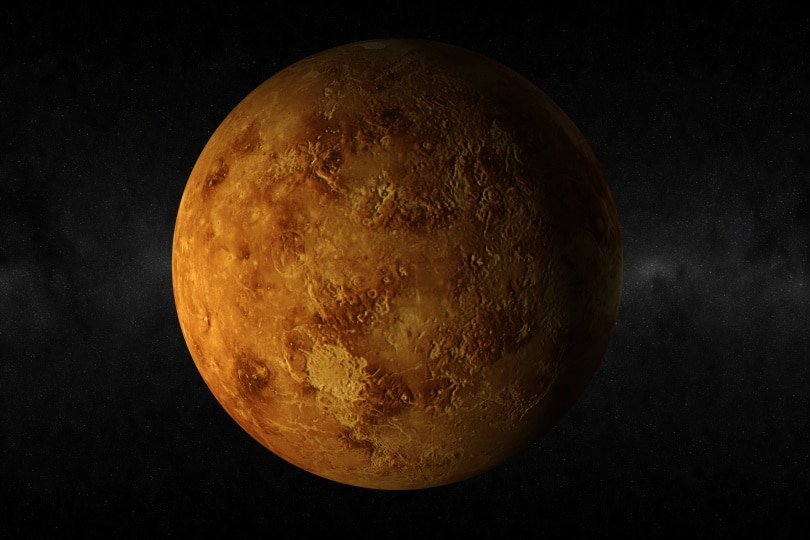How Far Away Is Venus? How Long Would it Take to Travel There?
Last Updated on

With stargazing in full swing and growing more popular by the day, few objects are more enticing to spot with the naked eye than Venus. While it’s typically only visible a few hours at dusk and dawn, it’s the brightest object that you can spot in the sky beside the Sun or Moon!
But how far away is Venus, our closest planetary neighbor, and how much closer to the Sun is it than Earth? How long would it take for us to travel there? We answer all those questions and more here.

How Far Away Is Venus From Earth?

Trying to determine the distance between two moving objects is never an easy affair, but when you must account for the fact that each object is moving in an elliptical motion, the math becomes even more complex.
That’s why the distance between the Earth and Venus can vary so wildly. Venus is “only” 24 million miles away at its closest distance, but when it’s at its farthest point, it’s a whopping 162 million miles away!
We refer to the closest distance between the planets as the inferior conjunction, which happens every 584 days, but even then, the distance changes slightly from year to year on an 8-year pattern. That means the closest distance of 24 million miles only happens once every 8 years!
On average, during inferior conjunction, the closest distance is 25 million miles. Interestingly enough, if you’re looking to get a good view of Venus, you don’t want to do it during inferior conjunction.
Instead, you want to wait until the greatest elongation. Simply put, this is when Venus is at the sharpest angle from Earth relative to the Sun. This makes sense because otherwise, all you see when you’re looking at Venus is the Sun!
But while this is when it’s best to view Venus, it’s only because it gives you the most possible viewing time, not necessarily a better view. Since Venus has such a thick atmosphere, it’s highly reflective. So, no matter when you’re looking at it, you’ll only see a reflective dot.
However, if you observe Venus throughout the year, you’ll notice that it goes through phases, much like the Moon. Light illuminates the planet’s surface facing the Sun, but we only see a fraction of the illuminated surface because we’re viewing it from an angle.
With a bit of magnification, you’ll notice a crescent, half, gibbous, and full Venus! But if you’re looking at Venus at the inferior conjunction, all you’ll see is a black dot on the Sun. While that can make for cool transit views if you’re using a solar filter, you’re not going to make out any additional details.
How Far Away Is Venus From the Sun?

All the planets circle the Sun in an ellipse, so just like there’s no set distance between Venus and Earth, there’s no set distance between Venus and the Sun!
While Venus has the least elliptical orbit of any of the planets, the distance still changes by about 1 million miles! The closest that the planet travels to the Sun is 66.7 million miles, while the furthest is 67.7 million miles.
However, the average distance is 67 million miles. For comparison, the average distance that the Earth resides from the Sun is 93 million miles.
While this undoubtedly has a huge impact on the planet’s surface temperature, it’s a common misconception that Venus is so hot simply because it is closer to the Sun. In fact, it has more to do with its thick atmosphere that traps greenhouse gases and superheats the planet!
These greenhouse gases take the surface temperature of Venus to over 880 degrees Fahrenheit! That’s about 100 degrees warmer than Mercury, even though it’s almost twice as far from the Sun as the smaller planet!
How Long Does It Take to Travel to Venus?

There are few things more exciting than space travel. Unfortunately, there are few things less complicated. Not only do we need to account for the location of the planet that we’re traveling to in relation to the time that it takes to get there, but we also need to consider the technology that we’re using to get there.
It’s not a straightforward process. The fastest time ever recorded to get to Venus was with the Mariner 2 mission. It took 109 days, but it was also the first mission to Venus. The latest mission, the Venus Express, took 153 days, despite it launching 43 years later!
A large reason for the difference is the fact that the Mariner 2 mission was simply a flyby while Venus Express was an orbiter. That’s an important distinction because while we love to mention the top speed that we can use to get to a planet, we often forget about the brakes.
As we get closer to the Sun, the brakes need to become even more powerful to offset its gravity. Moreover, it’s more challenging to travel straight to Venus at inferior conjunction. While that’s when we’re at the closest distance, that also means risking sending the probe straight toward the Sun.
This increases the top speed of the spaceship, which further reduces the amount of time that we need to get there, but it makes it near impossible to stop.
So, how long does it take to Venus? Anywhere from 3.5 to 6 months, but we could do it in even less time if we simply wanted to zoom past the planet as fast as possible!
What Is the Distance to Venus in Light Minutes?

There are many miles between Venus and us, and sometimes it’s just easier to break down things in a smaller unit of measurement, like lightyears. But for objects as close as planets, we have two options.
We can either opt for Astronomical Units (AUs), which refers to the average distance between the Earth and the Sun or go with light minutes and light seconds. Since the latter is never changing, that’s what we’re choosing here.
On average, Venus is roughly 6 light minutes from the Sun. While this number doesn’t change much, the amount of time that it takes light to reach us from Venus varies a bit more. It can take light from Venus anywhere from 2 minutes and 9 seconds to 14 minutes and 30 seconds to reach us, depending on our current distance from the planet!
Here’s a final interesting note: Since we see the light from Venus after it’s reflected, when we’re viewing Venus at its farthest point, the light that we’re viewing is actually about 20 minutes and 30 seconds old!
It took 6 minutes to reach the planet, where it was instantly reflected before taking another 14 minutes and 30 seconds to reach Earth!

Summary
Whether you’re new to astronomy and stargazing or an avid follower, there’s nothing like getting more context on what you’re observing. While we might not have been able to give you the straightforward answer to how far away is Venus that you were hoping for, we find that the intricacies of the truth are far more compelling!
So, keep asking questions and keep looking up. We’ll be here to answer any questions that you might have along the way!
Related Reading:
- How Far Away is Mars? How Long Would it Take to Travel There?
- How Far Away Is Jupiter? How Long Would it Take to Travel There?
- How Far Is Uranus From the Sun?
Featured Image Credit: Vadim Sadovski, Shutterstock
About the Author Robert Sparks
Robert’s obsession with all things optical started early in life, when his optician father would bring home prototypes for Robert to play with. Nowadays, Robert is dedicated to helping others find the right optics for their needs. His hobbies include astronomy, astrophysics, and model building. Originally from Newark, NJ, he resides in Santa Fe, New Mexico, where the nighttime skies are filled with glittering stars.
Related Articles:
How to Collimate Binoculars: 9 Expert Tips
How to Clean a Refractor Telescope: Step-by-Step Guide
How to Clean a Telescope Eyepiece: Step-by-Step Guide
How to Clean a Rifle Scope: 8 Expert Tips
Can You Use Binoculars to Look At Stars? How to Choose the Right Pair
How to Choose Binoculars for Bird Watching: 10 Expert Tips
15 Crucial Facts About Ultraviolet Rays & the Sun
What Constellation Is Spica In? The Interesting Answer!
